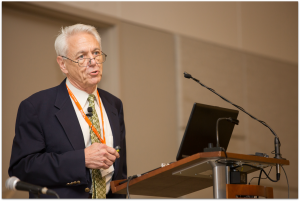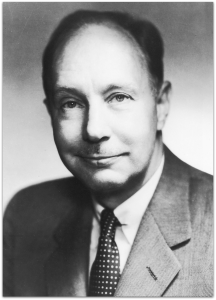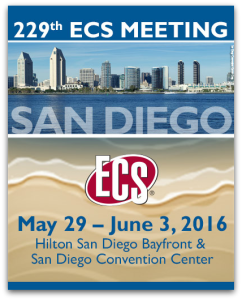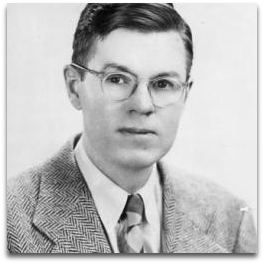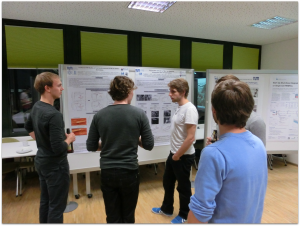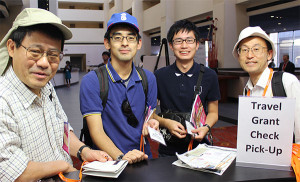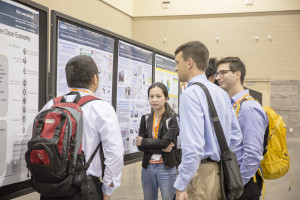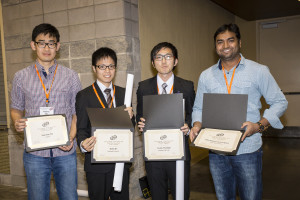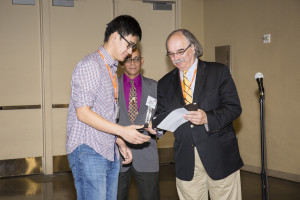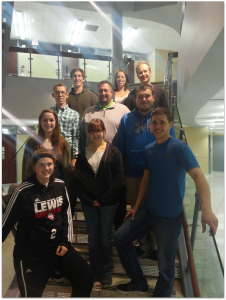
Top row (l to r): Mark Sivak, Samantha Brain, Zachary Widel Middle row: Jeromy Rech, Dr. Jason Keleher, Richard Wiencek Third row: Julianne Truffa, Lisa Janes, Jacob Murray Bottom row: Amy Mlynarski
From outreach to knowledge acquisition, the newly established Lewis University student chapter is paving a path to instill a new-found enthusiasm in electrochemical science and technology.
“We will be able to help foster a sense of excitement for electrochemistry and begin to inspire others, in the same way that we were inspired,” says Jeromy Rech, chair of the Lewis University student chapter.
The inspiration behind starting the student chapter began in the late spring of this year, when a group of students from Lewis University’s Keleher Research Group presented at the 227th ECS Meeting in Chicago, IL. Upon meeting other ECS student members that initiated student chapters of their own, Rech and his group knew that forming a chapter at Lewis University was in the cards.
“We saw this as a great opportunity to begin to network and cultivate an academic relationship with other students who share similar passions,” Rech says.
Once the chapter was approved at the 228th ECS Meeting in Phoenix, AZ, the group immediately put the ball in motion. From volunteering as judges in an annual science fair to hosting the capstone presentations for chemistry majors, the chapter is on track with its goals of outreach and knowledge acquisition.


